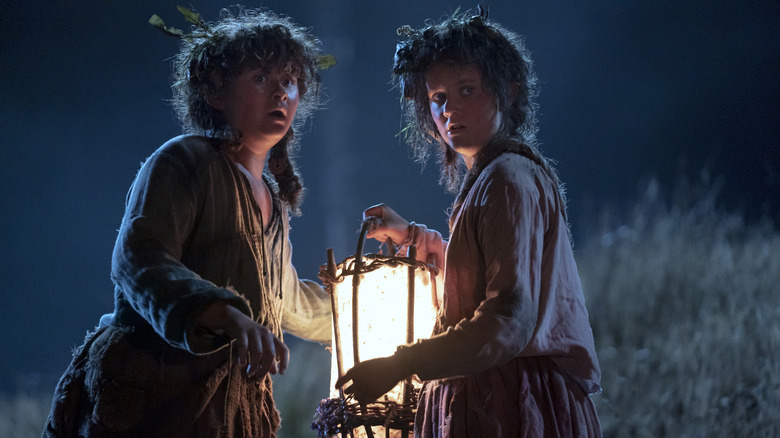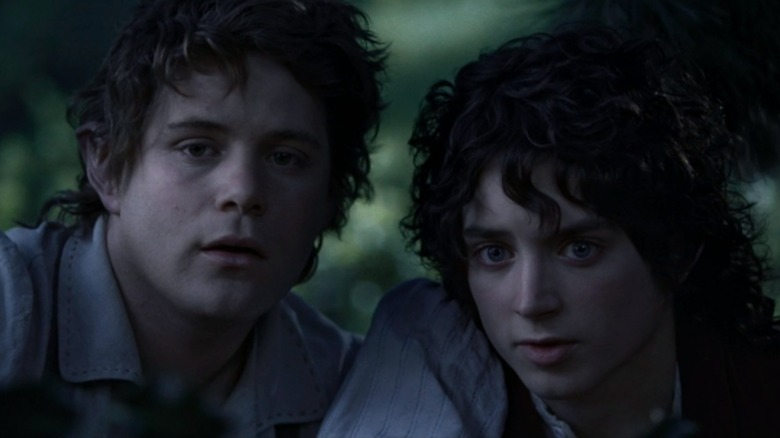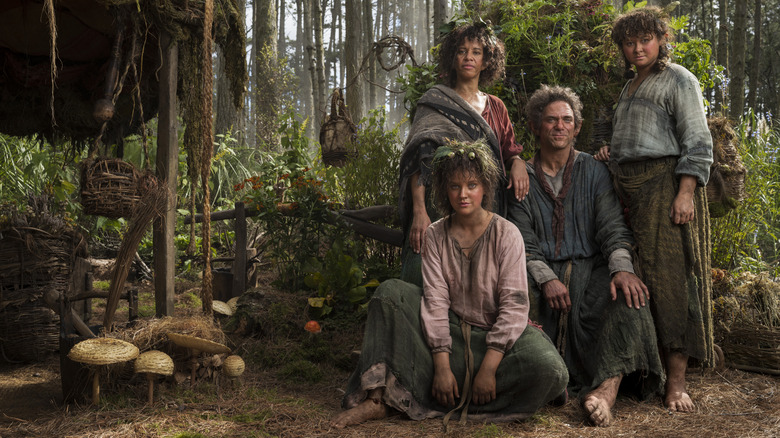The Rings Of Power Understands What Made The Lord Of The Rings Such A Singular Fantasy Story
With the benefit of hindsight and the full weight of history in our favor, it's easy to forget that Peter Jackson's "The Lord of the Rings" trilogy was never considered a preordained success — until it landed in theaters and became a runaway sensation, naturally. Without even getting into the various behind-the-scenes issues that plagued the lengthy and unparalleled production, skeptics remained unconvinced that such a fantastical world with all manner of bizarre creatures, exotic settings, and dense lore could possibly sustain four-quadrant appeal among casual audiences. And if it weren't for the sheer technical skill on display through every aspect of the trilogy, the doubters could've very well been proven right.
With "The Lord of the Rings: The Rings of Power" now trying to follow in the trilogy's footsteps, it's only natural to compare the two adaptations to see how this new series measures up to what many consider to be the definitive live-action take on Middle-earth. /Film's own Chris Evangelista said as much in his review for the Prime Video show, noting how much it seems to intentionally hew close to what we've seen before. Yet while that could easily be considered a fatal flaw, what if that proved to be the show's greatest strength instead?
For everything "The Lord of the Rings" had going against it, the key to its legendary status can be found in the smallest source imaginable: those lovable hobbits. "The Rings of Power" has brought in its own smallfolk substitute, their harfoot ancestors, to fill a remarkably similar narrative role. Amid all the grandiose imagery and epic conflicts and magical beings, the presence of the down-to-earth halflings has always set Tolkien apart from any other fantasy tale out there. The harfoots are a welcome — and vital — continuation of this trend.
What makes Tolkien, Tolkien?
How exactly do we even define what makes an adaptation "feel like Tolkien," as so many fans casually allude to? It's not as if there's any one specific tone or style that the famous fantasy author ascribed to. "The Hobbit" is as whimsical and childlike as "The Lord of the Rings" is poetic and adult-oriented, as "The Silmarillion" is utterly unreadable to anyone except the most insufferable Tolkien snobs. (Okay, as an insufferable Tolkien snob myself, I promise that last part's just a joke. Pitchforks down, folks!) When artists and creatives attempt to filter the source material's sensibilities through their own, the idea of parsing whether a specific adaptation choice would make Tolkien spin in his grave or not is nothing short of a fool's errand.
But while there's no accounting for taste and subjectivity, there is this argument to be made: The existence and specific role of halflings separate Middle-earth stories from any number of imitators. Consider contemporary rivals like "Game of Thrones," "Dune," "Star Wars," or "Harry Potter," all of which contain various elements of fantasy (regardless of their exact genre) but completely differ from "The Lord of the Rings" in ambition, purpose, and especially tone. As much as each property — "The Hobbit" and "The Lord of the Rings" included! — relies on the chosen one trope and the hero's journey, Tolkien was most successful by far in shifting perspective away from the most powerful and famous figures in their respective worlds towards the unassuming heroes most worthy of admiration.
By placing hobbits at the forefront of the action, they helped define the earliest stages of the story and ultimately played the biggest role in defeating the evil of Sauron. Tolkien always admired the little guy. The hobbits only made that more literal.
Putting the best (Har)foot forward
Anyone who watched the opening minutes of the "The Rings of Power" premiere likely felt an odd wave of familiarity wash over them. Here was an elf named Galadriel ominously narrating a sprawling prologue that documents (among other things) the defeat of a dark lord and the rise of Sauron, which eventually leads to a tonal reset with halflings in their communal village adding a spark of joy and lightheartedness to the proceedings. Yep, with a few exceptions in the exact details, that's basically beat-for-beat how "The Fellowship of the Ring" first begins.
Given how well that approach worked the first time, it's hard to fault those behind "The Rings of Power" for attempting a similar trick. In "Fellowship," all of those scenes set in the Shire immediately provided an escape from the doom and gloom prologue of Sauron's dominion over Middle-earth. The hobbits' idyllic home and rustic way of life stood in as a representation of every good and decent thing that would've been lost had Frodo failed in his quest to destroy the One Ring. In essence, the big-footed-nature lovers who live in holes in the ground set the stakes for the entire epic story.
Much the same applies to the harfoots in "The Rings of Power," with Elanor "Nori" Brandyfoot (Markella Kavenagh) and Poppy Proudfellow (Megan Richards) taking up much of the heavy-lifting that Elijah Wood's Frodo Baggins and Sean Astin's Samwise Gamgee once did. The fact that these harfoots feature their own distinct culture and belief systems from the hobbits certainly helps, with Nori adding an entirely different dynamic than Frodo ever did — notably, rushing headlong into adventure instead of resisting.
While the end of this adventure is yet to be seen, we couldn't imagine it without the harfoots.


